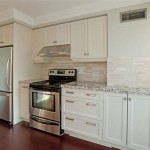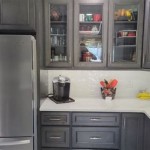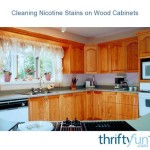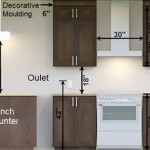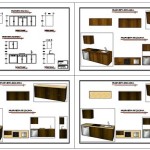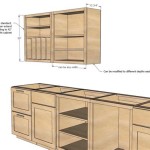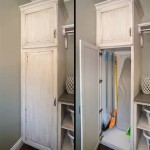Kitchen Cabinets and Baseboard Heating: Considerations and Solutions
Integrating kitchen cabinets with baseboard heating systems presents unique challenges that require careful planning and execution. Baseboard heaters, typically installed along the perimeter of walls, provide radiant and convective heat. Kitchen cabinets, conversely, are designed to be flush with walls and often occupy the same space. This proximity can lead to safety concerns, reduced heating efficiency, and potential damage to the cabinets. Understanding these issues and implementing appropriate solutions is crucial for a safe and functional kitchen design.
This article will explore the key considerations when installing kitchen cabinets over or near baseboard heaters. It will detail the potential problems associated with this configuration and outline various strategies to mitigate these risks. The aim is to provide comprehensive information that architects, contractors, and homeowners can use to make informed decisions during kitchen renovations or new construction projects.
Key Point 1: Safety Concerns and Building Codes
One of the primary concerns when installing kitchen cabinets near or over baseboard heaters is safety, particularly the risk of fire. Baseboard heaters generate significant heat, and combustible materials like wood cabinets placed too close can potentially ignite. Building codes often address this specific situation, mandating minimum clearances between heat sources and combustible materials. These clearances vary depending on the type of heater, the material of the cabinets, and the local building regulations. It is imperative to consult local building codes and regulations before commencing any work.
Beyond fire safety, there's also a concern for overheating. Enclosing a baseboard heater within a cabinet, or even partially obstructing its airflow, can cause the heater to overheat. This can lead to premature failure of the heating element, potentially creating a hazardous situation. Regular maintenance and inspection of the heating system are essential to identify and address any potential issues early on.
Another aspect of safety to consider is the potential for burns. While modern baseboard heaters are designed with safety in mind, the surface can still become hot enough to cause burns if touched. Cabinets that are installed too close to the heater can make accidental contact more likely, especially for children or individuals with limited mobility. This is particularly relevant in kitchens, where individuals are often moving around and reaching into cabinets.
To mitigate these safety risks, several strategies can be employed. These include ensuring adequate clearance between the heater and the cabinet, using non-combustible materials in the cabinet construction, and installing a heat shield to deflect heat away from the cabinet. The selection of the appropriate strategy will depend on the specific characteristics of the kitchen layout and the type of baseboard heater being used.
Key Point 2: Impact on Heating Efficiency
Even if safety standards are met, placing kitchen cabinets over or near baseboard heaters can negatively impact heating efficiency. Baseboard heaters rely on convection, the process of warm air rising and circulating throughout the room. When a cabinet obstructs this airflow, the heater becomes less effective at warming the space. The warm air becomes trapped, leading to uneven heating and potentially higher energy bills.
The degree of impact on heating efficiency depends on the extent to which the heater is obstructed. A cabinet that completely covers the heater will have a more significant impact than a cabinet that only partially obstructs it. Similarly, the type of baseboard heater can also influence the outcome. Some heaters are designed to radiate more heat, while others rely more heavily on convection. Radiating heaters may be less affected by cabinet obstructions than convective heaters.
To minimize the impact on heating efficiency, consider using cabinets with open bottoms or implementing ventilation strategies. An open bottom allows for better airflow and prevents the warm air from being trapped. Ventilation grilles can be installed in the cabinet to promote air circulation. These grilles can be placed at the top and bottom of the cabinet to create a natural convection current.
Another strategy is to choose a different type of heating system altogether. Alternatives include radiant floor heating, forced-air heating, or ductless mini-split systems. These systems do not rely on baseboard heaters and therefore avoid the issue of cabinet obstruction. However, switching to a different heating system can be a significant undertaking and may not be feasible in all situations.
Key Point 3: Cabinet Durability and Material Selection
The heat generated by baseboard heaters can also impact the durability and longevity of kitchen cabinets. Prolonged exposure to heat can cause wood cabinets to warp, crack, or delaminate. The finish on the cabinets can also be affected, leading to discoloration or peeling. This is especially true for cabinets made from less durable materials or those with poor-quality finishes.
To mitigate these risks, careful consideration should be given to the materials used in the cabinet construction. Solid wood is generally more resistant to heat damage than particleboard or MDF (medium-density fiberboard). However, solid wood is also more expensive. As an alternative, consider using plywood with a durable veneer. Plywood is less susceptible to warping than solid wood, and the veneer provides a protective layer against heat and moisture.
The type of finish used on the cabinets is also important. Heat-resistant finishes, such as polyurethane or conversion varnish, are better able to withstand the effects of heat than other types of finishes. These finishes form a protective barrier that prevents the wood from drying out and cracking. They are also more resistant to discoloration and peeling.
Another strategy is to install a heat shield between the baseboard heater and the cabinet. A heat shield is a barrier made from a non-combustible material, such as metal or ceramic tile, that deflects heat away from the cabinet. This can significantly reduce the amount of heat that the cabinet is exposed to, thereby extending its lifespan.
Furthermore, it is essential to maintain the cabinets properly. Regularly clean the cabinets to remove dust and debris that can trap heat. Avoid placing hot items directly on the cabinet surfaces. Apply a protective coating, such as a furniture polish, to help prevent the wood from drying out.
Beyond material selection, the overall design of the cabinets can also influence their durability. Cabinets with reinforced frames and strong joinery are better able to withstand the stresses of heat and humidity. Consider cabinets with moisture-resistant features, such as sealed edges and water-resistant glues, to further protect them from damage.
Additional Considerations: Design and Aesthetics
Beyond the aforementioned safety, efficiency, and durability considerations, the integration of kitchen cabinets with baseboard heating also presents design and aesthetic challenges. The presence of baseboard heaters can limit the placement options for cabinets and may require adjustments to the overall kitchen layout. The visible presence of heaters can also detract from the desired aesthetic of the kitchen.
One approach to addressing this is to carefully plan the cabinet layout to minimize the impact on the heaters. Avoid placing cabinets directly in front of heaters whenever possible. Instead, consider placing them to the side or above the heater, ensuring adequate clearance for airflow and maintenance. In some cases, it may be necessary to adjust the dimensions of the cabinets to accommodate the heaters.
Another strategy is to conceal the baseboard heaters behind decorative covers. These covers can be made from a variety of materials, such as wood, metal, or plastic, and can be designed to blend in with the surrounding cabinets. Ensure that the covers are designed to allow for adequate airflow to prevent overheating. Some covers are designed with ventilation grilles or slots to improve air circulation.
Another option is to relocate the baseboard heaters to a different location in the kitchen. This may involve rerouting the plumbing or electrical connections, but it can significantly improve the layout and aesthetics of the kitchen. Consider moving the heaters to a wall where cabinets are not planned, or to a location where they are less visible.
Finally, consider incorporating the baseboard heaters into the overall design of the kitchen. For example, the heaters can be painted to match the color of the cabinets, or they can be integrated into a custom-built cabinet enclosure. This can help to make the heaters less noticeable and create a more cohesive look.
Careful planning and design are essential to successfully integrate kitchen cabinets with baseboard heating. By considering the safety, efficiency, durability, and aesthetic implications, it is possible to create a kitchen that is both functional and visually appealing.
Ultimately, the decision of how to integrate kitchen cabinets with baseboard heating requires a comprehensive assessment of the specific circumstances, including the layout of the kitchen, the type of baseboard heaters, the materials used in the cabinets, and the local building codes. Consulting with qualified professionals, such as architects, contractors, and HVAC technicians, is crucial to ensure a safe and successful outcome.

Bookcase Over Baseboard Heat Fine Homebuilding

Baseboard Heating Home Remodeling Heater

How To Build Cabinets Over Baseboard Google Search Heating Installing Kitchen Baseboards

Float Cabinet Over Baseboard Heater Heating Covers

Built In Cabinet Over Baseboard Heat Room Remodeling Heating Dining Furniture Makeover

How To Build A Mudroom Wall Kitchen Cabinets Four Generations

How To Build A Mudroom Wall Kitchen Cabinets Four Generations

Help With Built Ins And Baseboard Heat Design Doityourself Com Community Forums

Built Ins Over Baseboard Heating In Shelves Living Room

How To Install A Cabinet Base With Floor Vent Sawdust Girl
Related Posts

